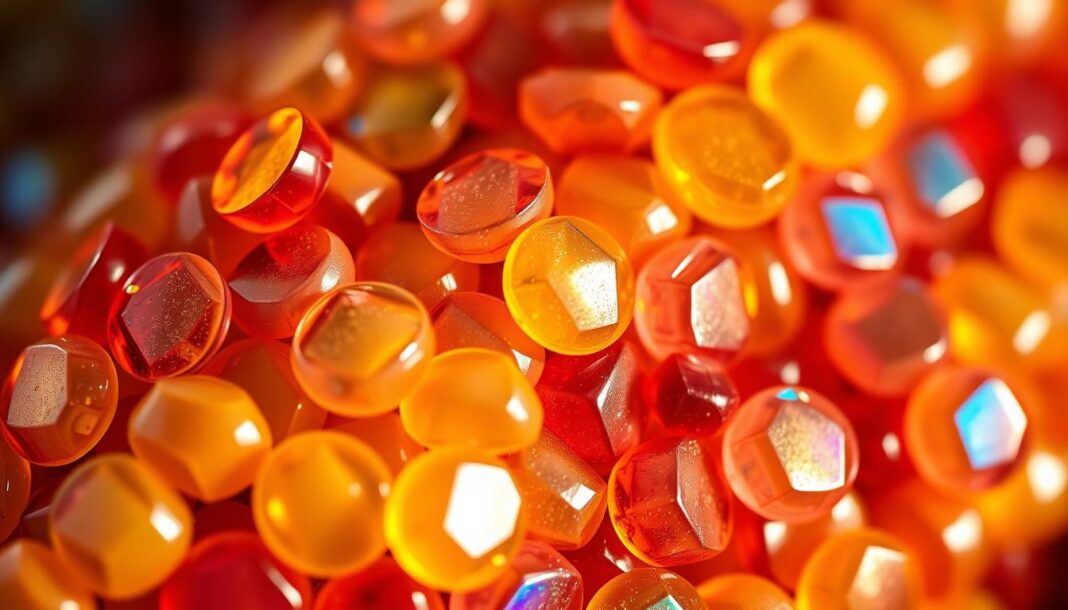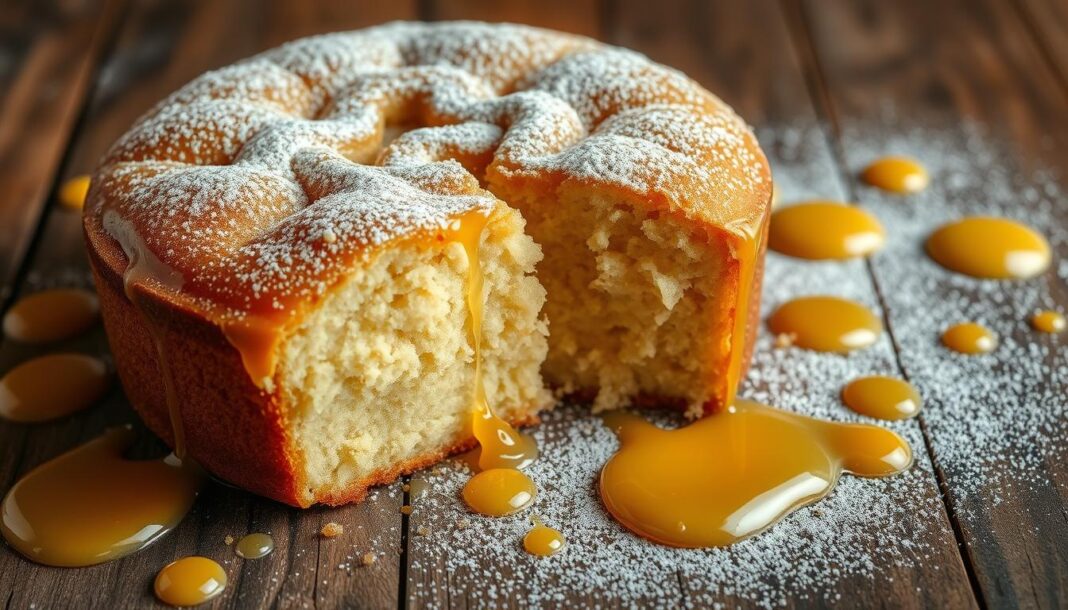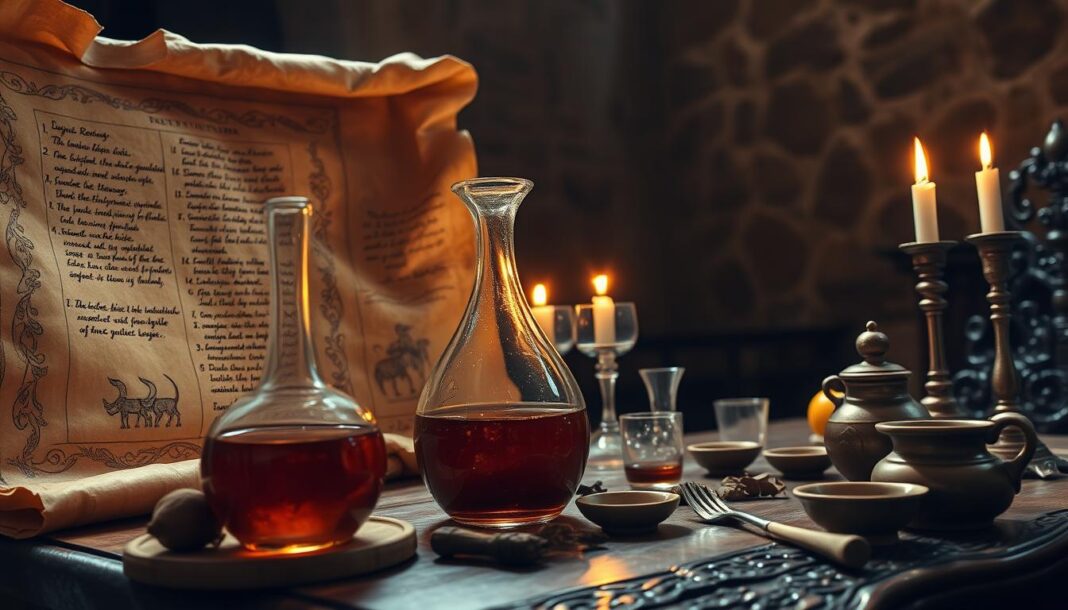At Historical Foods, we’re excited to share our expertise in cooking glass gem corn, an heirloom variety that’s as visually stunning as it is delicious. With its translucent kernels and rich nutritional profile, this unique corn variety deserves special attention in the kitchen.
Through years of experimentation and testing, we’ve developed a deep understanding of how to bring out the best flavors and textures in glass gem corn. In this comprehensive guide, we’ll cover three main cooking methods: dehydrating for storage, grinding into cornmeal, and popping into a unique popcorn.
Proper preparation techniques are essential for unlocking the full potential of this heirloom corn. By cooking glass gem corn to perfection, you’ll not only enjoy its rich flavors but also reap its nutritional benefits.
Key Takeaways
- Discover the unique visual appeal and culinary versatility of glass gem corn.
- Learn three main cooking methods to prepare glass gem corn.
- Understand the importance of proper preparation techniques for optimal flavor and texture.
- Explore the nutritional benefits of glass gem corn.
- Gain confidence in cooking this heirloom corn variety to perfection.
The Colorful World of Glass Gem Corn
With its stunning rainbow colors, Glass Gem corn is a true marvel of nature. This captivating variety has gained widespread attention for its vibrant hues and intricate patterns. The story behind Glass Gem corn is equally fascinating.

What Makes Glass Gem Corn Special
Glass Gem corn is special due to its unique breeding process. Carl Barnes, a half-Cherokee farmer from Oklahoma, dedicated his life to preserving traditional Native American corn varieties. He carefully selected and bred corn to achieve the stunning colors and patterns we see today. As noted on The Art of Doing Stuff, the process involved saving seeds from the most colorful cobs over many years.
Origin and History of This Vibrant Variety
The origin of Glass Gem corn is deeply rooted in Native American heritage. Barnes’ work was not only about creating a visually striking corn but also about connecting with his ancestral roots. For more information on historical foods and their significance, visit Historical Foods. The result of his dedication is a corn variety that is both beautiful and rich in history, appreciated by people around the world for its unique gem-like glass appearance.
Preparing Glass Gem Corn Cooked for Multiple Uses
The vibrant kernels of Glass Gem Corn can be utilized in multiple ways with the right preparation techniques. To make the most of this colorful corn, we need to start with proper harvesting and processing.
Harvesting and Selecting the Perfect Ears
Harvesting Glass Gem Corn at the right time is crucial. We select ears with fully mature kernels, ensuring they are ready for various uses. The kernels should be fully formed and the corn should have a slightly soft texture when pressed.
Blanching Technique for Easy Kernel Removal
Blanching is a critical step before removing the kernels. We submerge the ears in boiling water for a few minutes to loosen the kernels. Then, we immediately plunge them into an ice bath to stop the cooking process. This technique makes it easier to remove kernels from the cob.
Removing and Preserving the Colorful Kernels
To remove kernels, we hold each cob on its side and carefully run a sharp knife down the length of the corn. This method helps keep the kernels intact. After removal, we place kernels in a single layer on paper towels or drying racks to dry. For storage, we use airtight containers, such as glass jars, to preserve the kernels’ vibrant colors and freshness.
By following these steps, we can enjoy Glass Gem Corn in various dishes while maintaining its unique appearance and nutritional value.
Three Delicious Ways to Cook Glass Gem Corn
Let’s unlock the full potential of Glass Gem Corn by exploring three unique cooking methods. Glass Gem Corn is not just visually stunning, but it’s also incredibly versatile in the kitchen. We can dehydrate it for long-term storage, grind it into nutritious cornmeal, or pop it into a unique popcorn.
Dehydrating for Long-Term Storage
Dehydrating Glass Gem Corn is an excellent way to preserve its vibrant kernels for future use. This method allows us to enjoy our harvest throughout the year.
Step-by-Step Dehydration Process
To dehydrate Glass Gem Corn, we start by preheating our dehydrator to 135°F (57°C). We then spread the kernels in a single layer on the dehydrator trays, ensuring they don’t overlap. The dehydration process typically takes 6-8 hours, or until the kernels are completely dry and crumbly. It’s essential to check on the kernels periodically to ensure even drying.
Storage Tips for Dehydrated Kernels
Once the kernels are dehydrated, we store them in airtight containers to preserve their flavor and color. It’s crucial to keep these containers in a cool, dark place to maintain the quality of the kernels. Dehydrated Glass Gem Corn kernels can be used in various recipes, from soups to salads.
Grinding into Nutritious Cornmeal
Grinding Glass Gem Corn into cornmeal is another fantastic way to utilize this colorful variety. The resulting cornmeal is not only nutritious but also adds a beautiful hue to baked goods.
Equipment and Grinding Technique
To grind the kernels, we use a grain mill or a high-powered blender. We start by grinding small batches to achieve the desired consistency. For a finer cornmeal, we may need to sift the ground kernels and re-grind any larger pieces.
Glass Gem Cornbread Recipe
One delicious way to use our freshly ground cornmeal is in a classic cornbread recipe. We mix the cornmeal with flour, sugar, baking powder, salt, eggs, milk, and melted butter. The batter is then poured into a greased skillet and baked until golden brown. This cornbread is perfect as a side dish or as a base for other recipes.
Popping into Unique Popcorn
Popping Glass Gem Corn is perhaps the most fun and rewarding way to enjoy this variety. The resulting popcorn is not only delicious but also visually striking.
Perfect Popping Method
To pop Glass Gem Corn, we heat a pot with a small amount of oil over medium-high heat. Once the oil is hot, we add a few kernels to test the heat. When these kernels pop, we add the rest of the kernels in an even layer. We cover the pot and continue cooking, shaking it constantly, until the popping slows down.
Once we have our freshly popped popcorn, we can season it with a variety of flavors. A simple sprinkle of salt or a drizzle of meltedbuttercan enhance the flavor. For more adventurous seasonings, we can try mixingherb-infused butter,nutritional yeastfor a cheesy flavor, or various international spice blends. We can also experiment with sweet options like caramel coatings or cinnamon-sugar dustings. The key is to apply the seasonings evenly to avoid soggy popcorn.
By exploring these three cooking methods, we can fully appreciate the versatility and beauty of Glass Gem Corn. Whether we’re dehydrating, grinding, or popping, this variety offers a unique culinary experience that’s both delicious and visually stunning.
Tips for Growing Your Own Glass Gem Corn
For those eager to try their hand at cultivating this beautiful corn, we’re here to guide you through the process. Growing Glass Gem corn requires attention to detail and a bit of patience, but the results are well worth the effort.
To start, select a planting site with full sun exposure and prepare the soil with proper amendments. Glass Gem is a type of flint corn, and its specific growing requirements include spacing of 8-12 inches between plants and a soil temperature of 65-85°F for optimal germination.
Proper pollination is crucial for full ear development. Planting in blocks rather than single rows improves pollination rates. We’ll also cover common pests and diseases, and provide tips on saving seeds from your best ears to continue the tradition of selection that Carl Barnes practiced over many years.
By following these guidelines, you’ll be able to grow your own Glass Gem corn, enjoying its vibrant colors and sharing it with others, just as thousands of people around the world have come to appreciate it.


